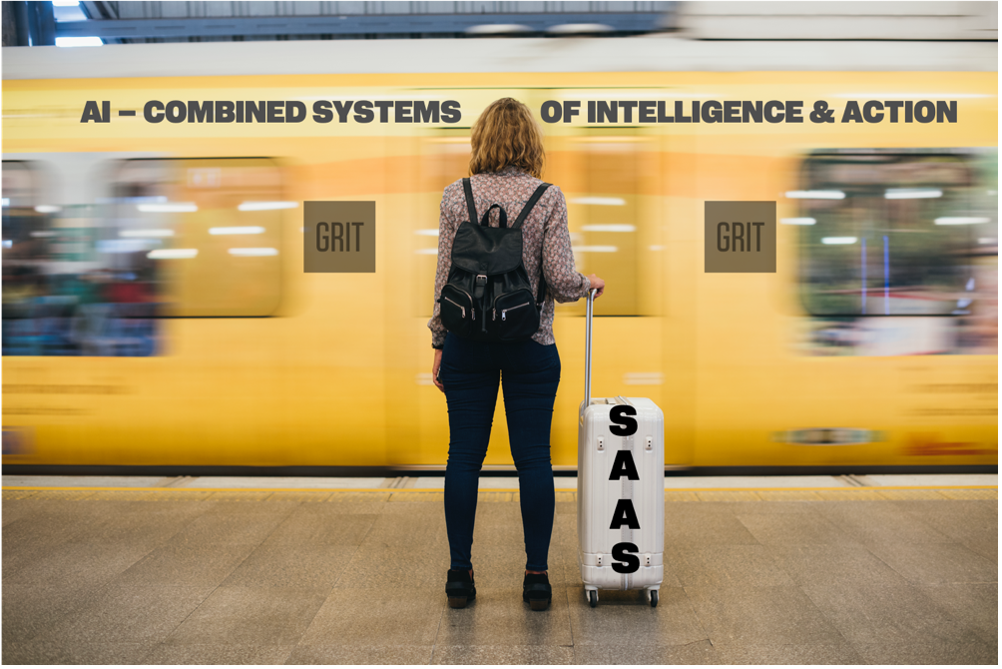Dear Founders: Your SaaS App Without AI Is Someone Else’s Feature

The AI-native wave isn’t coming. It’s here. And it’s quietly turning non-AI SaaS into technical debt.

In 2008, you could build a business by wrapping a spreadsheet in a web UI. Forms + dashboards = product. Add a subscription button = business. Save an office employee an hour a week = ROI. Congratulations, you're SaaS. But in 2025? That’s not only table stakes, it’s deeply vulnerable.
This isn’t criticism. It’s a love letter. It’s a wake-up call for founders who know how to build, but need a new playbook for what’s next. Here’s the heart of it: If your SaaS product doesn’t have intelligence and action built in, it’s just someone else’s feature waiting to be implemented.
From Menus to Decisions
In 2008, your product was the menu. Today, it needs to make the decision. Users don’t want more dropdowns. They want direction. They don’t want software that tracks progress - they want software that finishes the task. The bar has moved from “self-service” to “no-service.” If your product doesn’t help users do, someone else’s agent will.
The SaaS Stack Has Collapsed
The first definition of the SaaS stack was enshrined in Geoffrey Moore’s 2011 white paper, "Systems of Engagement and the Future of Enterprise IT." Moore described Systems of Record like back-office ERP and CRM, and Systems of Engagement as user-centric tools like social and mobile apps that enhance collaboration and communication. Satya Nadella added Systems of Intelligence somewhere between 2016 and 2018 when referring to cloud, data, and AI driven insights. And, the brilliant marketers at Workday renamed Engagement to Systems of Action. So here is how enterprise software has been working:
- Systems of Record — store everything
- Systems of Intelligence — analyze and visualize it
- Systems of Action — execute workflows
Well…that’s over. With agentic AI, intelligence and action are now the same layer. It’s not a stack. It’s a loop. Agents given a task, like “optimize this ad campaign” or “reason through this set of tasks” can improve over time in a way no stack or flow could before. The product learns, acts, and improves—automatically. If you're still designing your product like a stack, you're building for an architecture that's fading.
The AI-Native Product Is a Loop, Not a Stack
An AI-native app doesn’t just respond. It reasons. It doesn’t wait for clicks. It takes initiative. The frontier infrastructure for this is already here: Model Context Protocol (MCP) is like REST for intelligent agents. It lets AI components talk, share context, and collaborate with memory and purpose. NANDA (from MIT) is a reimagined version of DNS—not for websites, but for agents. Instead of asking “where is the service?”, systems ask “who can get this done?” and routes to the best available agent.
These aren’t tweaks. This is like cloud in 2008, APIs in 2010, and SDK’s in mobile. Quiet at first - then everywhere. The difference here is that cloud apps didn’t leave mobile innovations behind in their wake. In this case, if you are a SaaS company – and you think you are going to just add a bot interface to your system of intelligence or record, the terminal value of your company isn’t in the future, it is in your driveway, and depreciating like a Chevy.
What You Can Do Right Now
You don’t have to burn it all down. But you do have to rethink what your product is.
Ask yourself: What part of my product could learn from user behavior? What decisions are users repeating that a model could anticipate? How might an embedded agent turn a dashboard into a co-pilot? If I asked my customer (and user), if they made a clone of themselves, what would it do?
You’re not late. But you do need to ship fast.
Because someone out there is building the agent layer on top of your interface, charging less, building with a smaller team. They may reach scale and profitability in months, while your plan has that happening in years.
This Is Still Your Moment
If you remember building in 2008, you know this moment. That same tilt in the tech stack. That same window for founders to redefine the product itself. You’ve got the experience. You’ve got the customer relationships and some amount of scale. Now you just need the new primitives and maybe some new executives.
In 2025, the product is the agent. And the future of SaaS will belong to founders who aren’t just shipping features - but shipping intelligence that acts.
Let’s build.
